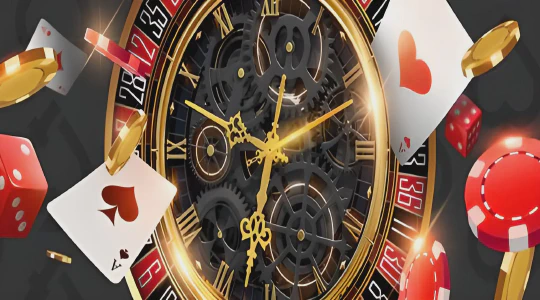Understanding the Meaning of Heads Up in Poker
Poker is a game of strategy and skill that has been enjoyed by millions of people all over the world. One of the most exciting and challenging forms of the game is “hearts up” poker, which is played by just two players. In this format, each player faces off against the other in a high-stakes battle of wits and strategy, with the winner taking all the glory and the pot.
But what exactly does “heads up” mean in poker? For those who are new to the game, it can be confusing to understand the terminology used by experienced players. Essentially, “heads up” simply means that there are only two players in the game, and they are facing off against each other in a one-on-one battle for supremacy.
This format of poker is often used in high-stakes games and tournaments, where players must be at the top of their game to come out on top. It requires a different set of skills and strategies than other forms of poker, and players must be able to read their opponents, bluff effectively, and make quick decisions based on limited information. It’s not for the faint of heart, but for those who love the thrill of the competition, there’s nothing quite like a game of heads up poker.
Understanding Heads Up Poker
Introduction
Heads up poker is a poker game in which only two players are involved. The game can be played in a variety of formats such as No Limit Texas Hold'em, Limit Texas Hold'em and Pot Limit Omaha. In heads up poker, the game is faster, more aggressive and requires players to adjust their strategy accordingly.Rules
The rules for heads up poker are similar to regular poker games. Players are dealt two cards each and can use them in combination with five community cards to make the best five-card hand possible. The aim of the game is to win all the chips of the opponent, either by making the best hand or by forcing them to fold.Strategy
In heads up poker, playing a wider range of hands is essential as there are only two players involved. Players should consider playing hands that they would typically fold in a full-ring game. The position is also critical, and players should be aggressive when they are in a good position and defensive when they are not.Players should also be aware that the opponent may try to bluff more often in heads up poker. It is important to pay attention to the opponent’s betting patterns, especially when they make large bets. Players should also be creative with their bets and raises, as this can confuse the opponent and give them an edge.
Conclusion
Heads up poker is an exciting and challenging variant of the game that requires players to adapt their strategy constantly. Players should play aggressively and consider playing a wider range of hands than in a full-ring game. At the same time, players should be aware of the opponent's behavior and betting patterns to gain an edge.Introduction to Heads Up Poker
What is Heads Up Poker?
Heads Up Poker is a form of poker played between two players. As the name suggests, it is a one-on-one game where the aim is to take all the chips of your opponent. It is a highly competitive and strategic format of poker that requires players to use their analytical skills, psychological tactics and quick decision-making abilities to outsmart their opponent.
Unlike traditional poker, where players compete against each other in a group, heads up poker focuses on individual play. The game can be played in various variations like Texas Hold’em, Omaha, Seven-Card Stud, and more.
One of the critical factors that make heads up poker different from other formats is the need for players to be aggressive. With only two players, the game can go on for an extended period, and a passive approach may lead to losing valuable chips. Therefore, players need to be assertive and seize every opportunity to gain an advantage over their opponent.
In conclusion, Heads Up Poker is a thrilling and challenging format of poker that requires exceptional poker skills, astute decision-making abilities, and mental toughness. Players who excel in this format develop a deep understanding of their opponent’s gameplay, employ smart tactics, and maintain focus throughout the game.
The Rules of Heads Up Poker
Introduction
Heads up poker is a form of poker that is played between just two players. In this game, strategy and skills are highly crucial as players are forced to make quick and strategic decisions. If you are new to the game, this guide will highlight some essential rules that are necessary for you to know Mostbet.
Starting the Game
Before a heads up game commences, a dealer is chosen, and the two players will be seated facing each other. The chips are then distributed equally between the two players, and each player gets a chance to be the first dealer. The first player to receive the cards is the player to the left of the dealer, and the game begins.
Gameplay
During gameplay, both players are allowed to bet an unlimited number of times, and the bet size can range from a minimum to a maximum amount. Each player receives two cards, and the game proceeds with the players deciding whether they want to call, raise, or fold.
- Call: This is when a player matches the bet of their opponent
- Raise: This is when a player increases the bet that their opponent has already made
- Fold: This is when a player forfeits their hand and bows out of the round
The Showdown
Once the final bet has been made, the game proceeds to the showdown. This is where both players reveal their hand, and the player with the highest-ranking hand takes the pot. If both players have the same hand, the pot is split between the two players.
Conclusion
These are the basic rules of heads up poker, and they are easy to remember and apply. With these rules in mind, you can now enjoy playing this fast-paced and exciting form of poker.
Strategies for Heads Up Poker
Adaptability is Key
In heads up poker, the dynamics of the game can change rapidly. It's important for players to be flexible and adaptable to their opponent's playing style. If your opponent is playing aggressively, try to tighten up your own play and wait for a strong hand to strike. Conversely, if your opponent is playing passively, take advantage by being more aggressive and betting more.Position is Critical
In heads up poker, position is everything. Being in position – that is, acting after your opponent – gives you a major advantage. You get to see what your opponent does before you make your move, giving you more information to work with. Try to play more hands when you're in position and be more cautious when you're out of position.Tight and Aggressive
In heads up poker, playing tight and aggressive can be a winning strategy. By only playing strong hands and being aggressive with your betting, you can put your opponent under pressure and force them to make difficult decisions. This approach requires discipline and patience, but it can pay off in the long run.Mind Your Bankroll
Heads up poker can be a volatile game, with swings in fortune happening quickly. It's important to be mindful of your bankroll and play within your means. If you go on a losing streak, don't chase your losses by playing higher stakes than you're comfortable with. Take a break, evaluate your play and make adjustments if necessary.Study Your Opponent
In heads up poker, you're playing against a single opponent, so it's important to study their playing style and tendencies. Pay attention to their betting patterns, how they respond to different situations and any tells they might have. Use this information to adjust your own play and gain an edge over them.Bluffing in Heads Up Poker
Bluffing is an essential strategy in heads up poker. Playing against only one opponent means you have to rely heavily on the power of your hand and your ability to read your opponent's actions. Bluffing can help you win hands that you might otherwise lose, and it can also help you steal pots when you have a weaker hand.
One of the keys to successful bluffing in heads up poker is to know your opponent. Pay attention to their betting patterns, their body language, and their verbal cues. You need to understand their playing style and predict when they are likely to fold or call. If you can identify weak points in their game, you can exploit them through bluffing.
Another important aspect of bluffing in heads up poker is timing. You need to choose your moments carefully. Bluffing too often will make you predictable, and your opponent will catch on quickly. However, bluffing too infrequently can also lead to problems. If your opponent knows that you only bet when you have a strong hand, they will be more likely to call your bets in the future.
If you decide to bluff, you need to be confident and convincing. Your actions should suggest that you have a strong hand and that you are willing to bet big. Use your body language, your tone of voice, and your betting behavior to sell your bluff. Remember, your opponent is watching you carefully, so it's essential to stay in character.
Finally, it's important to remember that bluffing is not a guaranteed strategy. It's a high-risk, high-reward tactic that should be used sparingly. Bluffing too much can lead to big losses, but bluffing at the right time can help you win big pots and gain valuable momentum in a heads up poker game.
Playing Styles in Heads Up Poker
Heads up poker is a unique format of the game that requires a different approach than playing in a full ring game. In heads up poker, players face off against only one opponent, which means that playing styles can be more aggressive and less predictable.
One common playing style in heads up poker is the "maniac." This player is known for being very aggressive and playing a lot of hands. They will often raise or re-raise with weak hands in order to put pressure on their opponent and force them to make mistakes. While this style can be effective, it can also be risky if the maniac does not have the hand to support their aggressive play.
Another playing style in heads up poker is the "nit." This player is known for being very tight and only playing strong hands. They will often fold to any aggression from their opponent and wait for a strong hand to make a move. This style can be effective, but it can also be predictable, making it easier for the opponent to exploit.
The "balanced" playing style is a mix of both the maniac and nit styles. This player will switch up their play and be unpredictable in order to keep their opponent guessing. They will play tight when their opponent is being aggressive, and they will attack when their opponent is playing too passively. This style requires a good understanding of the game and the ability to read your opponent well.
Regardless of which playing style you choose, the key to success in heads up poker is to be adaptable and flexible. You need to be able to adjust your play to your opponent's style in order to gain an edge. By being aware of the different playing styles in heads up poker, you can better understand your opponent and make better decisions at the table.
Importance of Position in Heads Up Poker
Understanding Position in Poker
In any poker game, position is crucial to the success of a player. Position refers to the order in which players act in a hand. The player who acts last is said to be in the best position, followed by the player who acts second-last, and so on.Importance of Position in Heads Up Poker
In heads up poker, position becomes even more important as there are only two players involved. The player in the button position (acting last) has a significant advantage as they are able to see their opponent's action before making their own decision. This enables the player in the button position to make more informed and strategic decisions.Strategies for Position in Heads Up Poker
When playing heads up poker, it is important to take advantage of position whenever possible. A player in the button position should make aggressive moves when their opponent is in early position, while playing cautiously when they are in early position themselves.It is also important to recognize when you are at a disadvantage in terms of position, such as being in the big blind position. In such cases, it may be better to play a tighter and more defensive game, rather than being overly aggressive and putting yourself at further risk.
Conclusion
In heads up poker, position is a key factor to consider when making decisions. The player in the button position has a significant advantage and should use it to their advantage whenever possible. However, it is also important to recognize when you are at a disadvantage in terms of position and adjust your strategy accordingly.Common Mistakes to Avoid in Heads Up Poker
Playing Too Many Hands
One of the most common mistakes in heads up poker is playing too many hands. When playing one-on-one, the range of playable hands is much wider than in a full ring game but it's important to not get carried away. Be selective in your starting hands and avoid playing weak hands out of position.Not Adjusting to Your Opponent
Playing against the same opponent multiple times allows you to learn their style and adapt your strategy accordingly. Some players are more aggressive than others, so it's important to adjust accordingly. For example, against an aggressive player, you may want to tighten up your starting hand range and play more defensively.Ignoring Position
Position is an important factor in all forms of poker, but it's especially important in heads up. Being in position allows you to control the pot size and make better decisions post-flop. Don't forget to consider your relative position to your opponent and adjust your strategy accordingly.Becoming Predictable
If you always play the same way or make the same types of bets, your opponent will be able to predict your moves and adjust their strategy accordingly. Keep your opponent guessing by mixing up your play and not always following the same patterns.Focusing Too Much on Bluffing
Bluffing is an important tool in heads up poker, but it's not the only way to win. Focusing too much on bluffing can lead to mistakes and missed opportunities. Make sure to balance bluffing with value betting and semi-bluffing to maximize your winnings.Playing Heads Up Poker Online
Introduction
Online heads up poker is a popular way of playing poker against just one opponent over the internet. This format of poker has become increasingly popular due to the convenience it offers to players who can participate from anywhere and at any time.
Playing Heads Up Poker Online
One of the key advantages of playing heads up poker online is the convenience of being able to play from home or any location of your choice. Players do not have to travel to a physical casino to participate in a game, saving time and transport costs.
Also, online heads-up poker games often have lower buy-ins, compared to live casinos, making it an affordable option for players of all bankrolls.
Strategy for Online Heads Up Poker
When playing online heads-up poker, it is important to have a solid strategy in place. Unlike playing poker with multiple players, heads-up poker requires a different approach and mindset. Players need to be aggressive, observant, and have a good understanding of their opponent’s playing style.
Additionally, it is essential to choose the right online poker platform and use the online tools available to you, such as statistics and hand trackers, to stay atop of your game.
In Conclusion
Playing heads up poker online offers a variety of benefits to players. If you are an avid poker enthusiast looking to improve your game or a beginner looking to try your luck at a lower cost, consider playing heads up poker online, and enjoy all the advantages this format has to offer.
Live Heads Up Poker
Live heads up poker is a thrilling battle between two skilled players. It is a game of intense concentration and strategy where every move counts. The game is usually played with two individuals facing each other, which makes it more exciting because the players can read their opponent's body language and facial expressions.
Live heads up poker is played at different levels in casinos and poker rooms, from low stakes to high stakes games. The higher the stakes, the higher the pressure and the bigger the winnings. Players who excel in heads up poker have mastered the art of bluffing, exploiting their opponents' weaknesses, and making calculated decisions.
In live heads up poker, players have to be patient and wait for the right opportunity to strike. They have to watch their opponent's moves closely, and take note of every small detail, as it could be the key to winning the game. An important aspect of heads up poker is being able to adapt to your opponents' playing style, which requires a clear understanding of your own strengths and weaknesses.
- Tips for Live Heads Up Poker:
- Be patient, wait for the right opportunity to strike
- Watch your opponent's moves closely
- Take note of every small detail
- Be aware of your own strengths and weaknesses
- Adapt to your opponent's playing style
Live heads up poker is not for the faint of heart. It is a game of patience, skill, and strategy that requires total concentration and focus. If you're up for the challenge, it can be one of the most exciting and rewarding games to play in a casino or poker room.
Tournaments in Heads Up Poker
Heads up poker tournaments are becoming increasingly popular among poker players. In these tournaments, each player faces off against others in one-on-one matches until a winner is crowned.
Heads up tournaments come in several formats, including single-elimination, double-elimination, and round robin. In single-elimination tournaments, players are eliminated after losing one match. In double-elimination tournaments, players have a chance to come back after losing one match. Round robin tournaments involve each player playing against every other player in the tournament.
Heads up tournaments require a different strategy than traditional multi-table tournaments, as players have to adapt to a completely different dynamic. Bluffing and aggression become more important in heads up play, as players are forced to play and make decisions more frequently and with less information about their opponents.
Heads up tournaments can offer high stakes and large payouts for skilled players, but they also require extensive practice and experience to succeed. As with any form of poker, it is important to have a solid understanding of the rules and strategies involved in heads up play in order to be successful.
- Single-elimination
- Double-elimination
- Round robin
Notable Heads Up Poker Players
Heads up poker is a highly competitive game, attracting some of the best players in the world. Here are some of the most notable heads up poker players:
- Phil Ivey: Regarded as one of the best poker players of all time, Phil Ivey has won numerous heads up poker tournaments, including the NBC National Heads-Up Championship in 2008.
- Daniel Negreanu: Another well-known player, Negreanu has won several heads up titles, including the inaugural WSOP Heads-Up Championship in 2008.
- Tom Dwan: Known for his fearless style of play, Tom Dwan has made a name for himself as a top heads up player, winning millions in online and live games.
- Vanessa Selbst: The only woman on this list, Selbst has a reputation for being a tough and aggressive player, winning multiple heads up tournaments during her career.
- Fedor Holz: This young German player burst onto the scene in 2015 and quickly made a name for himself in heads up tournaments, winning the Alpha8 tournament in Las Vegas that year.
These are just a few of the many talented heads up poker players out there. With the popularity of this format on the rise, we can expect to see more and more skilled players emerging in the future.
Final Thoughts on Heads Up Poker
Heads up poker can be a thrilling and intense form of the game that requires a unique set of skills and strategies. Whether you are playing online or in person, it is important to understand the dynamics of heads up play and to adjust your game accordingly.
One key aspect of heads up poker is the importance of position. Because there are only two players at the table, your position in relation to your opponent can have a significant impact on the outcome of each hand. It is crucial to be aware of your position and to take advantage of any opportunities that arise.
Another important consideration is the aggressiveness of your play. In heads up poker, players tend to be more aggressive than in other forms of the game, since there are fewer players and more opportunities to steal pots. However, it is important to find the right balance between aggression and caution, and to avoid being predictable in your play.
Overall, heads up poker is an exciting and challenging form of the game that requires a combination of skill, strategy, and psychological awareness. With practice and experience, you can improve your performance and become a successful heads up player.



